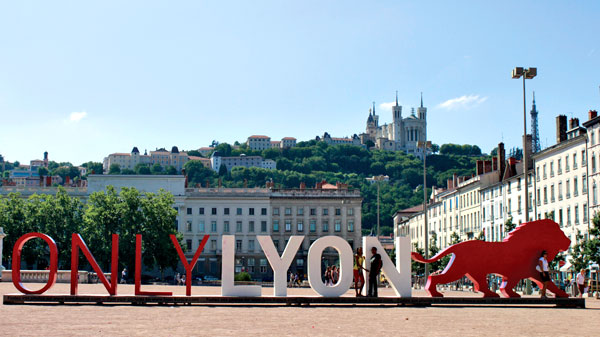With a national capital synonymous the world over with culture, fine food, finer wines and outstanding architecture, it’s easy to understand why much of the rest of France fails to attract the level of tourist footfall it really ought. But any bold traveller would be well-advised to head some 500km east where they will soon find themselves ensconced in the ancient and undeniably beautiful city of Lyon.

Nestled between two rolling rivers – the Rhône and the Saône – and flanked by verdant hillscapes, this 500,000-strong city is the very antithesis of the capital’s cosmopolitan urban sprawl. It’s not just the visual aesthetic that is different; it’s the whole ambience. The locals are much friendlier than their notoriously conceited capital-dwelling cousins and the whole city is blissfully devoid of the self-conscious bustle now brandished as a badge of honour by the modern world’s major metropolises.

It is perhaps the city’s abiding stature that is the root of its reflective splendour. The area now known as Lyon was first settled by the invading Romans back in 43 BC. Despite the passing of more than two millennia, traces of that early occupation still abound. As well as the surprisingly intact Roman Baths and the Ancient Theatre of Fourvière (built around 15 BC), there is the Gallo- Roman Museum of Lyon-Fourvière, rising out of the ruins of a 1,900-year-old Roman theatre.

Granted UNESCO World Heritage status in 1998, Fourvière is one of the city’s biggest attractions. Aside from its ancient affiliations, it’s also home to one of the city’s slightly more modern claims to fame – the Basilica of Notre Dame de Fourvière. Built in the 19th century in the Gothic Revival style, those seeking that Instagram-perfect snap should brave the stairs and head to the top of the north tower for truly stunning vistas of the city.
Another must-see is the nearby district of Old Lyon, once one of the of the must redoubtable Renaissance hubs to be found beyond Italy’s borders and the heartland of the city’s widely-admired printing and silk industries. Today, its cobbled streets and beautifully-preserved architecture make it the ideal spot for an afternoon’s exploration. If possible, set aside time to explore the traboules – a unique set of intra-building passageways dating back to the Middle Ages.

From there, head across the Saône to La Place Bellecour, the largest pedestrian square in Europe and the heart of Presqu’île, the city’s ever-bustling shopping district. Literally Lyon’s ‘Mile Zero’, with all the distances within city limits measured with reference to this point, it’s the perfect place to get your bearings and to decide which of the many nearby museums to take in next.
Two of the most popular options are the Musée de l’Imprimerie, a celebration of the days when Lyon was the leading European printing hub, or the Museum of Textiles, home to a fascinating retelling of how the city became a silk-weaving centre non pareil, with more than 2.5 million fine fabrics bearing testimony to the unique skills of its craftsmen of old.

Visually sated, many travellers have been delighted to discover that, beyond things to see, the city also offers an unparalleled selection of truly delicious items to dine upon and to savour long after your holiday has ended. It’s fair to say that, back in the ’30s, when ‘Curnonsky’, the most famed French food critic of the day, dubbed Lyon the “gastronomic capital of the world”, few queried the validity of his research or his intuition.
Its reputation for menu mastery was further burnished in 1933 when Eugenie Brazier, a local restauranteur, became the first female chef to be awarded three Michelin stars. In her later years, she then became the world’s first chef – regardless of gender – to head two three- Michelin-starred fine dining establishments simultaneously. Today, her legacy lives on at La Mere Brazier, the local two Michelin-starred eatery that bears her name.

Tellingly, it was one of Brazier’s protégés, the late Paul Bocuse – arguably one of the most famous and well-loved of all contemporary French chefs – who, back in 1969, introduced the world to nouvelle cuisine, a whollyrefreshing, lighter and more delicate style of Gallic food preparation. Today, his three Michelin-starred L’Auberge du Pont de Collonges remains one of the most sought-out dining destinations in all of Lyon.
While the city is now home to some 20 Michelin-starred restaurants, its reputation for eatery excellence extends well beyond its fine dining establishments. The city’s traditional bouchons – upmarket inns that have fed affluent visitors since the early days of the 18th century – also play a key role in its culinary appeal, offering sumptuous saucissons, hearty stews and a range of other classic dishes, all served in a decidedly down-to-earth and wholly convivial atmosphere.

Those whose palates yearn for slightly more refined fare, however, are perhaps best-advised to skip these bouchons and head straight to Les Halles de Lyon Paul Bocuse, a covered food hall boasting 56 distinctly gourmet experiences. From fromagers to charcutiers, wine specialists and pastry pros, pretty much every taste is catered for and every sensibility indulged, leaving visitors sated, satisfied, yet hungry for more. In that, it’s a little like Lyon itself.
Text: Tenzing Thondup
Photos: La Mere Brazier



